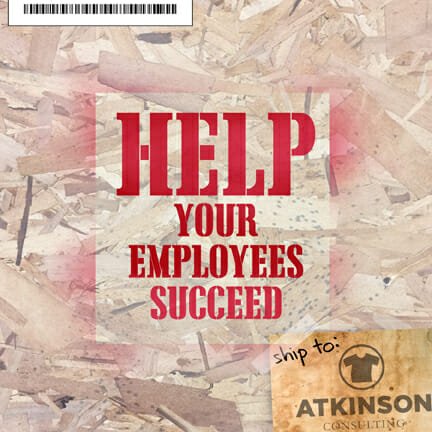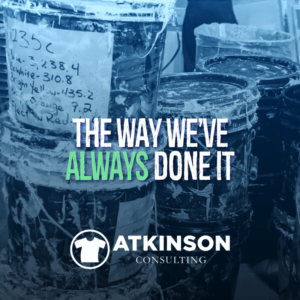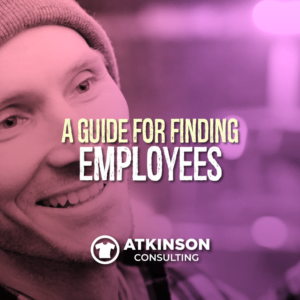
In your business are your employees constantly working towards completing the tasks needed? Probably not.
We’re people, not a bunch of robots, so human centered problems can become obstacles in everyday work.
To get your staff to complete more tasks in a day, there are some things to consider. Look inward and see if any of these fit.
Stuff Not Working
You would think that staff would speak up sometimes when things aren’t going their way, but they often don’t.
They don’t want to be seen as troublemakers or maybe they just want to try to resolve the challenge themselves. So when that computer workstation slows down and freezes, you are going to be the last to know. Your staff will just simply restart and reboot that thing four or five times a day. What a boat anchor.
Another challenge that constantly comes up is working with software. I can’t tell you how many shops use licensed shop software, and they only get a limited number of them as they are expensive. The problem that occurs is when you have more workers that need access than you have licenses for. If you have had to send an email asking someone to log out, so you can work on a job raise your hand. This has a direct impact on worker productivity, not to mention overall job satisfaction. Is it really worth the money to skimp?
Maybe there is a better way. I do know that some shop software systems have barcode log in readers to more employees can have access to the system without as many licenses. You should find out if the one you are using has that capability.
Let’s not forget when the server or wifi router shuts down. With everything in your business connected, it can be an overwhelming experience to not be able to send an email or connect to the outside world. These days bandwidth is at a premium. With that notion, is the guy in the back office live streaming music? What if more than one person is doing the same? That molasses slow internet connection you have when you are trying to download that 100mb art file is due to that dude that has to get his Maroon 5 fix.
Making Extra Work
Let’s face it, not everyone thinks things through when it comes to their jobs. Some people will just sludge through things and do them any ol’ way. A crucial step for any manager is to make sure that your team isn’t making extra work for themselves.
You would like to think that people just get their training by osmosis, meaning that just being in the building will allow them to pick up the right way to do something. However, it doesn’t work that way in real life.
You have to show people how to do something, sometimes several times, before they really understand what you are talking about.
Have you ever trained someone in how to coat a screen with emulsion, pull (or push) a squeegee to print a shirt, or hoop straight for embroidery? How many people get it right the first time? Zero. It takes practice to do it well, with quality and speed. That only happens when they get the experience of doing that task.
Are you letting them drive the car? Sure, they will be slow and make mistakes, but that’s all part of learning. Want more people trained? You have to train them.
Sometimes other departments might make things tricky. I went to a shop a few years ago and noticed the accounting file cabinets in the middle of the production area. Evidently the accounting team thought that was a good open area to place them, as they didn’t want them cluttering up the office space. So during the workday, the production folks had to walk around these to perform their tasks.
Every. Single. Day.
A great trick to see how efficient your shop layout is in reality is to draw a spaghetti diagram of the floor for each worker. You simply detail a quick diagram of the space, and draw with a pen a line that corresponds to their steps as they move around the shop working. When you see that they are constantly going across the shop for something, ask them about it. It may turn out that they are borrowing a tape gun from another department ten times a day because they don’t have one. That’s a $10 fix with instant impact. Or, in the example above, they are circling around something on the floor that can be easily moved. Straight lines are always quicker.
What is the way of your staff from working faster?
Work Instructions
I’m sure you would like to think that your team knows what to do each day, but do they know what is really important?
Unless you stress that this certain order has to ship, or that report needs to be completed by noon, they can get sideways with their day and run out of time. Have you heard that before?
How are you triaging and prioritizing your day? Does everyone in the building know what to do next? Is there a way to easily look up the priorities without having a major meeting? If your team can’t function and know what today’s priority work is without stopping everything and having a discussion, you aren’t doing it right.
Here’s a quick quiz that you can do to find out. Today, go ask the crew what they are working on next, and even the job after that. Will they have the answer?
Today’s work should be set yesterday. Tomorrow’s work should be made ready today. Think things through.
Also when it comes to work instructions, jobs don’t go to the floor with missing information. Either the job is ready to work on, or it is on hold. This all happens from the sales and order entry end of the stick.
Get everyone in the building set up for success by organizing the job in the beginning. If your art staff has to ask what color shirt the job is for, or if your production team has to stop what they are doing as there is a box of youth shirts to print and the design won’t fit; there is a hole in your process. Your work orders are your blueprints for success. Make sure they are complete early on.
Also, if any work instructions change (especially shipping from ground to expedited freight), your office staff needs to get up out of their chairs, go find the work order, and replace the outdated information with what’s new. It’s not ok just to put it in the system or send and email. Production staff are busy working, not necessarily looking for messages. I know it is a pain to walk across the shop, but it is minor compared to being chewed out from a client because disaster just struck with that order. Trust me.
Work Attitudes
A long time ago I learned the rule of thirds when it comes to groups of people. The first third is comprised of the go-getters, the A-listers and the rockstars. These are the fantastic folks that every group says they can’t do without. I’m sure just reading this sentence you can name a handful of people in your company that you would describe this way.
The middle third are the people that just aren’t quite at that level. Sure they do good work, but they loaf around occasionally, sometimes are late for work, make dumb mistakes, and probably could use some extra training or support.
The bottom third are the worst workers in your company. These are the people that are on your list when you need to downsize. They will be the first to go. They have been written up before, maybe even suspended. They cause trouble. They have crappy attitudes. People often think, “I wonder why Fred is still here? How come management doesn’t do something?”
If you are a leader in your company your goal should be to always make the top third happy, try to move the middle third up to the top tier, and to train up or eliminate the bottom third. The more you do this, the better your organization will become. Keeping anyone on the bottom third just poisons the well and sometimes makes for an unhappy work atmosphere.
I’m positive you’ve seen it and experienced it before. That comment about Fred? That’s really about your leadership team.
Work Conversations
Your staff doesn’t work in a vacuum. You should be constantly inquiring and discussing with them about their job. Is everything ok? Do you have what you need? What isn’t working?
At least twice a year sit down with each of them and discuss their job performance and set some goals for improvement for the next six months. Ask them what they would like to do. Are they happy in their current capacity? You’ll find that a good number of the people on your team have higher aspirations than what they are currently doing for you now. Some are happy just doing their job, and that’s fine. But for the ones that want to grow and learn, are you supporting them?
Pulling this information out and setting some training goals will help your overall bench strength with your staff. I don’t care what company you work for, you are going to need new workers; and in every department.
People quit, people get fired, people move away. One of the top questions I get asked constantly is “Where do I find trained help?”
My answer is, right under your nose!
When you are hiring for your basic worker staff, don’t just think that this person is going to fill that slot forever. Hire for attitude, train for skill. During the hiring process try to find someone that has the innate capabilities to learn a job three or four levels above what you are hiring them for during the interview. I’ve found that during interviews, it is the people that are asking tons of questions, taking notes, and wanting to learn all about the company that make the best employees that you can train. The people that just sit there like a statue usually won’t go anywhere on the training journey you need. Look for that enthusiastic curiosity.
It is Up to You
Work staff job performance is all about leadership. Are you getting them what they need to succeed? Clear expectations on what needs to be accomplished. The right tools for the job. Working equipment. Training for more skill. An extra hand when they need it.
Most of the time there are plenty of clues out there. You just have to have your eyes and ears open and receptive to gathering that information and making good decisions.
This means you can’t manage by sitting in your office. You must constantly go and see. When someone asks you “Hey, what do I do next?”, that’s the tip that you have something broken in your company.
At the end of the day, work staff job performance is a direct result of the interest and effort you put into developing them.
.
“Nothing can stop the man with the right mental attitude from achieving his goal; nothing on earth can help the man with the wrong mental attitude.” – Thomas Jefferson
“Our greatest weakness lies in giving up. The most certain way to succeed is to try just one more time.” – Thomas Edison
“Job training empowers people to realize their dreams and improve their lives.” – Sylvia Matthews Burwell





7 comments
Steve
Marshall once again you are right on target. Keep up the great work!
atkinsontshirt
Thanks Steve!